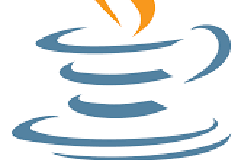This would be a very interactive course where each batch would have not more than three students. Less number of students would ensure and uninterrupted attention to each child. At the end of the course a student would be able to complete the Python portion of CBSE Class 11.
Syllabus
- Getting started with Python
- Introduction
- Python-pluses
- Python-minuses
- Working with python
- Understanding first program/script
- Python Fundamentals
- Introduction
- Python Character Set
- Tokens
- Keywords
- Identifiers
- Literals
- Operators
- Punctuators
- Barebones of a Python Program
- Variables and Assignments
- Creating a variable
- Multiple Assignments
- Variable Definition
- Dynamic Typing
- Sample Input and Output
- Reading Numbers
- Output Through print() Statement
- Data Handling
- Introduction
- Data Types
- Numbers
- Strings
- List and Tuples
- Dictionary
- Mutable and Immutable Types
- Operators
- Arithmetic
- Relational
- Identity
- Logical
- Bitwise
- Operator Precedence
- Operator Associativity
- Expressions
- Evaluating Expressions
- Type Casting
- Working with some standard library modules
- Math module
- Random module
- Statistics module
- Conditional & Iterative Statements
- if, if-else, if-elif-else; simple programs: e.g.: absolute value, sort 3 numbers, divisibility
- Notion of iterative computation and control flow: for ( range() , len()), while, flowcharts.
- Text Handling
- compare, concat, and substring operations (without using string module).
- List Manipulation
- Creating and accessing lists
- List Operations
- Working with lists
- List functions and Methods
- Dictionaries
- Key:Value Pairs
- Working with Dictionary
- Dictionary Functions and Methods
- Working With NumPy
Numpy 1D array, 2D array Arrays: slices, joins, and subsets. Arithmetic operations on 2D arrays





